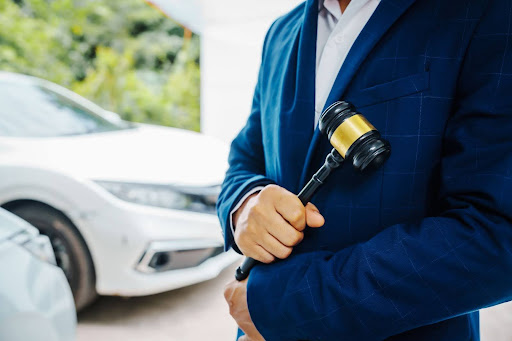
If you are injured in an accident, it’s 100% the other person’s fault, right? Not always. Sometimes, plaintiffs may find themselves in a situation where something they did leading up to their injury could later be used to reduce their settlement amount. This concept, where both parties share the blame, is called comparative fault. Let’s examine comparative fault in Indiana and how it plays out in Merrillville personal injury cases.
What Is the Legal Definition of Comparative Fault in Indiana?
In legal terms, the definition of comparative fault is a bit confusing. It essentially means that if you are less than half responsible for the accident as a plaintiff, your damages are reduced by that amount. Let’s say that you are speeding and another party runs a stoplight. Even though the other person ran the stop sign, you were still speeding, and that could have contributed to your car accident injury.
Why Does Comparative Fault in Indiana Exist?
Comparative fault exists for a wide variety of reasons. First and foremost, it makes sure that damages are assessed fairly. If a plaintiff were to recover 100% of their damages in the speeding/stop sign example discussed above, that’s not a fair outcome in the case to the defendant. It also creates accountability for everyone who is driving. The defendant has a legal incentive to obey the sign laws, as does the plaintiff with speeding.
In reality, comparative fault balances cases with legal complexities. Accidents and injuries seldom occur where one person is 100% liable. It also increases access to justice and improves the legal system overall.
Pros and Cons of Comparative Fault
There are pros and cons of comparative fault. For example, it can lead to a potential loss of part of a settlement. Another problem with comparative fault is that it can lead to prolonged litigation. It can be used as a tactic by insurance companies to reduce their payouts. The largest problem with comparative fault is that it is extremely subjective. Going back to the speeding through a stop sign example, it’s hard for a judge or jury to determine an exact percentage to reduce from the plaintiff’s claim.
On the other hand, comparative negligence tends to make the outcome somewhat fairer in cases where a plaintiff might try to take advantage. Even though a plaintiff is obligated to receive a fair settlement, comparative fault helps keep the system fair. Also, comparative fault is extremely adaptable across different types of injury cases.
How Is Comparative Fault Determined In Indiana?
As mentioned above, comparative fault is subjective. When a jury is deciding a case, the judge gives them instructions and reminds them of the statute. Of course, the jury will have reviewed the evidence, including:
- The opinion of expert witnesses.
- Police reports and other relevant documentation.
- Eyewitness testimony from the scene of the injury.
- Other evidence, like videos, if they exist.
The jury ultimately gets to decide the percentage of liability for each party, the sum of which is 100%. If a jury is attentive, they might be able to look at aspects of the plaintiff’s evidence to learn what to apply to their verdict and decision, such as the speed in a car accident, whether or not a warning sign was present in a slip and fall accident, or documentation of a missed inspection in a work accident.
Can the Defendant Use Comparative Fault as a Defense?
Since it can be used to reduce liability, comparative fault is almost always used as a defense strategy in personal injury cases. Here are some examples:
- In a car accident, the defense might try to find some evidence that mitigates the plaintiff’s compensation amount. Was the plaintiff distracted while driving? Were they speeding? This is a defense of comparative fault in a car accident.
- In a slip and fall accident, the defendant might try to determine if the plaintiff was in an area where they weren’t supposed to be.
- The defense might try to undermine the plaintiff’s claim entirely.
Let’s say a plaintiff walked out into the street while talking on the cell phone. The defendant, who was not speeding, did not notice them until it was too late. The defense might focus on cell phone records, witness testimony, and other evidence showing that the plaintiff was distracted. The jury might arrive at a 60% fault determination for the plaintiff and 40% for the defendant. In that situation, the plaintiff is over the 51% fault threshold and the defendant does not owe damages.
Why Do You Need an Attorney for a Personal Injury Case That Hinges upon Comparative Fault in Indiana?
A lawyer will help a plaintiff establish the best possible scope of evidence. In a case of distracted driving, a lawyer can get a subpoena for phone records. Sometimes, during a negotiation, comparative fault can be used as leverage to get a defendant to settle. On other occasions, the defense might present evidence that tries to diminish the plaintiff’s claim based on comparative fault.
That’s where a personal injury lawyer in Merrillville can help with your case. Work with Lerner and Rowe if you feel like you have a difficult personal injury case that you want to settle. Our injury attorneys have recovered billions for injured clients across America and we won’t charge you a fee unless we get you a settlement after a rental car accident thanks to our “no win, no fee” policy. Contact us today to get started on your free case consultation. You can reach us by phone at (844) 977-1900, live chat LiveChat, or our secure online form.



